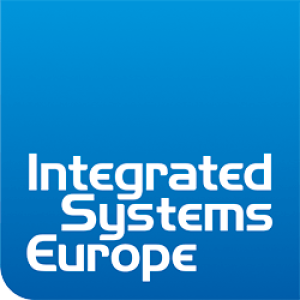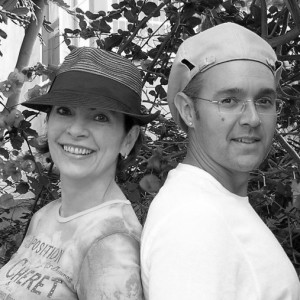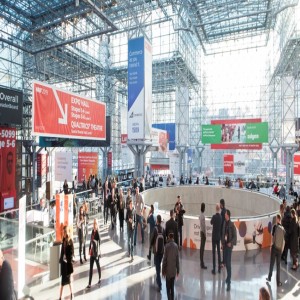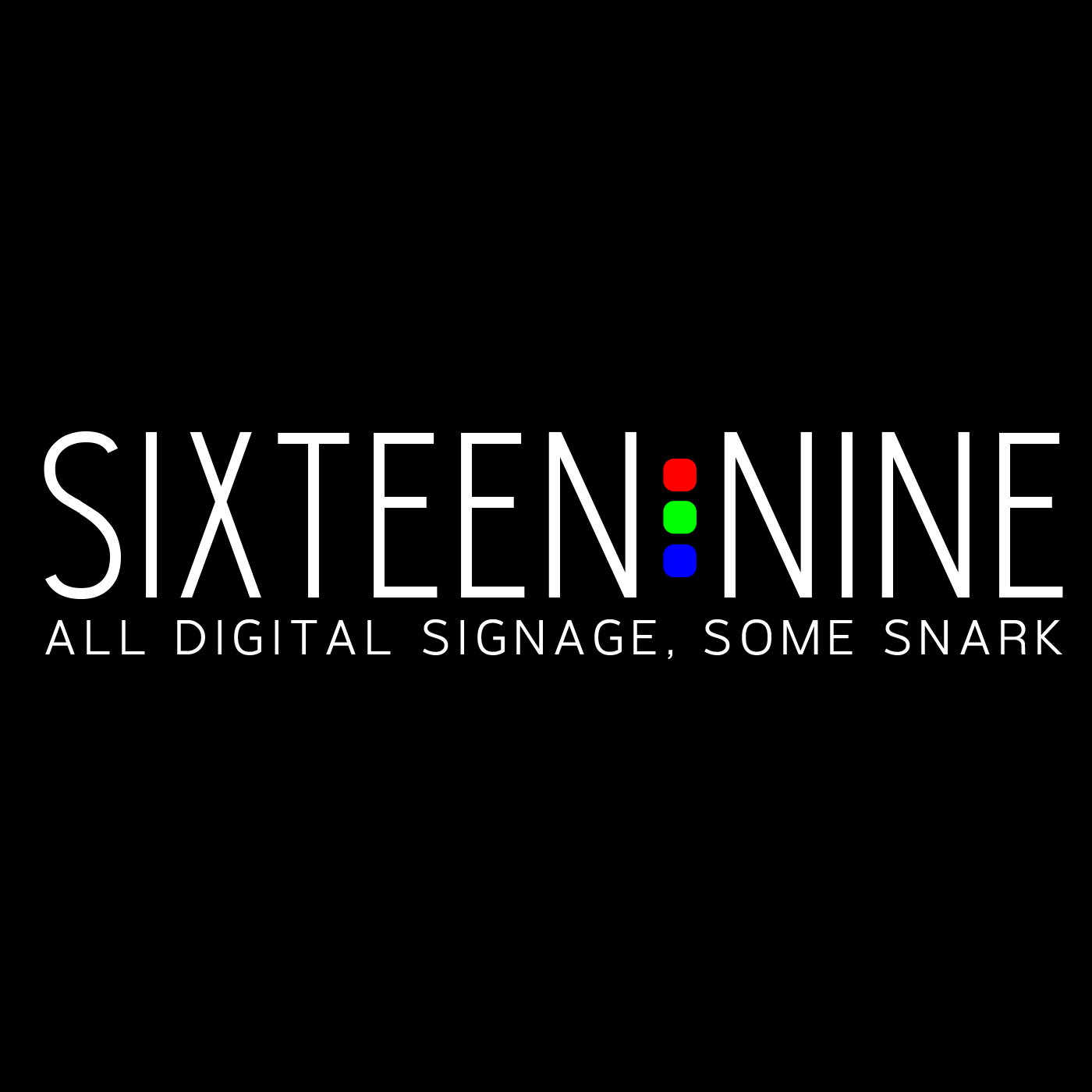Episodes

Wednesday Jul 10, 2019
JJ Parker, Tightrope Media Systems
Wednesday Jul 10, 2019
Wednesday Jul 10, 2019
Tightrope Media Systems is one of the oldest companies in the digital signage ecosystem, with roots tracing back to 1997 in Minneapolis.
Co-founder J.J. Parker bought a stack of books and taught himself coding to come up with what was then called a video bulletin board system for local schools. They managed to sell a license, and another, and another, and Tightrope turned into a real company with employees.
More than two decades later, Tightrope is still at it, and doing well, with some 40 employees and a digital signage product called Carousel that's focused on two key markets - education and workplaces.
An interesting note is that Carousel works on Apple TVs. It's not one of those cases where a developer got something to work, and not much more. The platform is integrated with enterprise-grade management platform called JAMF, and Apple's education sales team actually buddy-calls with Carousel.
Parker kindly took a half-hour away from a working vacation in Madrid with his family to walk me through the roots of Tightrope and where things now sit.
Subscribe to this podcast: iTunes * Google Play * RSS

Wednesday Jun 12, 2019
Ian Dallimore, Lamar
Wednesday Jun 12, 2019
Wednesday Jun 12, 2019
In the out of home space, Lamar Advertising is huge. The Baton Rouge-based media company is in 160 metro areas in the US, and has more than 3,300 roadside digital billboards.
The company is steadily adding more digital, notably in environments like airports. Lamar just lit up an impressive and expensive network inside the baggage area at the domestic terminal of Las Vegas's airport.
Ian Dallimore heads digital for Lamar - a gig that has him working with out of home specialists, brands and the vendors who feed into the technology ecosystem.
We get into a bunch of things in this chat - including data-driven advertising, programmatic and what people should know when they dip their toes into digital out of home.
Subscribe to this podcast: iTunes * Google Play * RSS

Wednesday Jun 05, 2019
Burr Smith, Broadsign
Wednesday Jun 05, 2019
Wednesday Jun 05, 2019
I'm kinda breaking my own podcast rule here by interviewing someone for a second time, but Burr Smith has been a busy guy lately - buying companies and fighting patent trolls.
I spoke with the CEO and owner of Broadsign a couple of years ago, but it was more than time for an update chat given recent events.
Broadsign recently acquired Ayuda Media Systems, which at least some in the industry would see as a competitor. Then it bought another company in Montreal, called Campsite, that's a programmatic ad exchange.
This happened in the wake of a long, expensive but ultimately successful legal battle with a Swedish company that would generally be referred to as a patent troll. While most companies took the path of least resistance and paid "go away" money, Smith fought.
In this podcast, we get into the back-story of the recent acquisitions, and then have a chat about Smith going toe to toe with T-Rex.
Subscribe to this podcast: iTunes * Google Play * RSS

Wednesday May 29, 2019
Ronnie Lee, Holocryptics
Wednesday May 29, 2019
Wednesday May 29, 2019
When DSE was on a few weeks ago in Las Vegas, I wandered down to the other end of the convention center to get a glimpse of the legendarily crazy Nightclub and Bar Show - where endless booths pour free drink samples.
I wanted to see how nuts it really was, but I was also on a mission to see the set-up of a Vegas start-up called Holocryptics, which is building a service around hologram-like virtual DJs that any nightclub or bar can rent by the hour.
Holocryptics provides to operators a packaged kit that includes a built-in media server, projector and mesh direct-projection surface. The DJs are custom videotaped in a studio, and high-end audio recorded, to produce files that look, on a transparent screen, like the bobbing and juking knob-twirlers are really there.
It could cost $1,000s to get a seasoned DJ to do a set at a club. With this set-up, there's a pretty reasonable one-time CAPEX hit, and then a DJ set costs less than $30. And it can get launched and controlled off a smartphone app.
I spoke with founder Ronnie Lee about the roots of his company, how things work, why holograms and how this could - in theory - be applied to all kinds of things, like political whistle-stops and distance learning.
Subscribe to this podcast: iTunes * Google Play * RSS


Wednesday May 22, 2019
Fab Stanghieri, Cineplex Digital Media
Wednesday May 22, 2019
Wednesday May 22, 2019
Canadians all know Cineplex as the dominant movie theater chain in that country, and the Toronto-based company has also been expanding its reach, in recent years, into other related lines of business.
Cineplex now has entertainment-centric restaurant-bars, is bringing Top Golf into Canada, sells out of home media and runs a thriving digital media group that's doing most aspects of digital signage for major enterprise customers in Canada and beyond those borders.
Fab Stanghieri was a senior real estate guy with Cineplex, charged with building and managing the company's movie house portfolio. He had digital media added to his responsibilities a few years ago, and while it was unfamiliar territory at first, he's embraced digital to a degree that it is now his primary focus in the company.
I was passing through Toronto a couple of weeks ago, and Fab kindly took some time to show me around new office space, which is set up to help ideate, deliver and manage digital signage solutions for Cineplex clients.
Subscribe to this podcast: iTunes * Google Play * RSS

Wednesday May 15, 2019
Dan Hagen, 10net
Wednesday May 15, 2019
Wednesday May 15, 2019
Dan Hagen is a relatively young guy, and a bit of an Energizer Bunny. I know of him as the 10net guy from Vancouver, but I was surprised to learn in a conversation that he has been involved in digital signage since before it was called digital signage.
He was a funding founder of Mercury Online Solutions, which in the late 90s and early 2000s was a big player in this business. That company sold to 3M, and as way too often happens, things went south quickly when a plucky little company gets absorbed into a monster of a company.
Hagen did a few things but eventually found his way to 10net, which is a solutions provider that does most of its work in Vancouver, BC, but is now trying to establish itself south of the border in the Pacific Northwest and beyond.
In our chat, we get into how 10net does things, the kinds of projects it works on, and our shared point off view that sum of the most effective digital signage jobs out there are, at first glance, kinda boring looking.
There's not a lot of sizzle in things like backroom screens for safety messaging on ferries, but they make a real difference.
Subscribe to this podcast: iTunes * Google Play * RSS

Wednesday May 08, 2019
Robert Heise, Global Display Solutions
Wednesday May 08, 2019
Wednesday May 08, 2019
Most people think about northern Italy for wine, food, fashion and beautiful scenery, but it's also home to some well-established technology companies like Global Display Solutions, or GDS.
The company has been around for decades and built up a very solid business for rugged, industrial-grade displays for use-cases like bank ATMs.
GDS expanded into digital signage and digital out of home, and those areas are now a big part of the company's business. GDS gets used for things like drive-thru displays and digital street furniture.
Robert Heise is an EVP and GM with GDS, and runs the US business. We hooked up for this podcast to talk about the company's roots, and how what they do and sell differs from the competition.
We also spoke about the potential and limits for direct view LED as digital posters, and the huge potential GDS sees for electronic ink.
Subscribe to this podcast: iTunes * Google Play * RSS

Tuesday Apr 30, 2019
Neeraj Pendse, Elo
Tuesday Apr 30, 2019
Tuesday Apr 30, 2019
Elo has been doing touchscreens for 40 years - way, way before marketers started cooking up phrases like customer engagement technology. Over that time, the company has shipped more than 25 million units.
So Elo knows touch, and interactive.
Based in Silicon Valley, the company has in the last few years made a pretty big push into digital signage with everything from countertop displays to big 70-inch touchscreens that look like giant tablets.
I spoke recently with Neeraj Pendse, the company's VP Product Management. His responsibilities include Elo’s large format and signage products, the EloView service, and the commercial Android roadmap and devices. We get into a lot of things - including what works and doesn't in interactive design, how Elo differs from touch overlay companies, and why a touchscreen manufacturer developed and now markets device management software.
Subscribe to this podcast: iTunes * Google Play * RSS

Wednesday Apr 17, 2019
Brian McClimans, Peerless-AV
Wednesday Apr 17, 2019
Wednesday Apr 17, 2019
The companies who do the infrastructure that gets screens in place and make video walls look amazing are a huge part of the digital signage ecosystem, but don't get all that much attention.
One of the biggest – if not THE biggest – is Chicago-based Peerless AV, which has been a major part of digital signage for many, many years.
Most people know Peerless AV for its mounting systems for digital signage displays and video walls – something they do very well. But the company has also been doing outdoor displays – not just the enclosures – for more than a decade
The company had a big moment with its marketing about a year ago when it started very clearly and overtly saying We do this, AND we do that. It’s working. The company had a killer Q4 and Q1 of this year was as good or better.
I spoke about where Chicago-based Peerless-AV is at with Brian McClimans, the VP Sales for North America and Asia Pacific.
Subscribe to this podcast: iTunes * Google Play * RSS

Wednesday Apr 10, 2019
Sean Matthews, Visix
Wednesday Apr 10, 2019
Wednesday Apr 10, 2019
Sean Matthews managed to break away from booth set-up at Digital Signage Expo - well, actually he was probably happy as a clam to get away from the noise and bustle - to sit down and talk about Visix, the Atlanta-based CMS software company he's ran for many years.
While many of his software competitors have been all over the place chasing whatever vertical presented an opportunity, Matthews has pretty steadfastly kept Visix focused on a couple of key vertical markets - higher education and workplaces. There are more than 1,000 Visix systems operating on college and university campuses.
We had a wide-ranging talk outside the North Hall at the Las Vegas Convention Center, and you'll probably pick up some of the bustle ahead of the show opening. Matthews gets into the roots of Visix, what's worked for the company, and where things are going.
Subscribe to this podcast: iTunes * Google Play * RSS

Wednesday Apr 03, 2019
Jeremiah Archambault, ENS
Wednesday Apr 03, 2019
Wednesday Apr 03, 2019
Every year or so, Jeremiah Archambault rings me up, usually out of the blue, from his office in Victoria, BC, on the very west coast of Canada.
He runs a decade-old company called ENS that has, for that time, been steadily developing a digital signage CMS software and management platform, that's now called SAM. With each call, he's given me an update on what's new with the platform and his seemingly endless testing and refinement. I've always finished off the conversation intrigued by what he was putting together.
A decade on, his company has built up a decent footprint of everything from small to enterprise clients, and he's now at a point where things are getting serious. I spoke with him, this time, from the outbound marketing and inbound support call center he's set up and has running in the Philippines. He's aggressively signing up and on-boarding new business partners, with a particular focus on print and sign shops that now know they need to add digital capability, but want it white-labeled and managed by someone else.
In this podcast, we chat about the roots of the company, and a lot of lessons learned about deployment, hardware and dealing with pesky humans. We also get into how he's about to finally get noisy about his solution, with a freeware model that uses a PC stick he's dead-certain is reliable and ideally suited to digital signage.
Subscribe to this podcast: iTunes * Google Play * RSS

Wednesday Mar 20, 2019
Jane Boyce, Tru Vue
Wednesday Mar 20, 2019
Wednesday Mar 20, 2019
When I was in Las Vegas a couple of weeks ago, I made a point of having a look inside a bar at the Venetian that had a big, fairly spectacular video wall. An industry friend had seen it, and said while the content was great, the wall badly, badly needed anti reflective glass.
I looked ... and it did.
Big displays and slick software get much of the attention in digital signage. I'd argue not enough attention gets paid to other components that may seem boring by comparison, but make or break installations.
One of those components is the glass in front of screens. Engineered glass can eliminate or minimize reflection. Reject UV. And protect very expensive screens from damage.
Great technology and great content doesn't amount to much if you can't see the damn screen because of reflection from the surroundings.
A company called Tru Vue - which has ginormous manufacturing plants in Illinois and Minnesota - does what it calls technical glass, or engineered optics. Their process applies a transparent coating to sheets of glass that kills reflection and can actually improve what people are looking at through that glass.
I was interested in talking to Tru Vue because digital signage is a new market the company is just starting to open up. The great majority of the world's top museums and art galleries already use Tru Vue glass in front of their Picassos and other art treasures.
So, logically, if the glass makes a Picasso look better, it's probably going to do a pretty good job making burgers and shakes look tasty on a drive-thru digital sign.
I spoke with Tru Vue CEO Jane Boyce ...
Subscribe to this podcast: iTunes * Google Play * RSS

Wednesday Mar 13, 2019
Bjorn Pieper, NDS
Wednesday Mar 13, 2019
Wednesday Mar 13, 2019
The Dutch software company NDS has been offering a digital signage software solution for 25 years now, and like the handful of other companies that have been around this business that long, they've survived and grown based on the ability to do certain things very well.
In the case of NDS, the company's roots and core business are at airports. That started with getting arrivals and departures data up on passenger terminal screens, and over the years, grown more sophisticated.
Airports are cities, in many respects, and they are the precursors for the smart cities digital signage networks that are starting to bubble up globally. You tie into a lot of systems, and what's visualized on the screens reflects what is going on, more broadly, in the facility or area.
I spoke with Bjorn Pieper, the Chief Commercial Officer for NDS, about how his company works not only with airports, but a lot of big corporations, to make digital signage networks that are truly smart.
Subscribe to this podcast: iTunes * Google Play * RSS

Wednesday Mar 06, 2019
ISE Chats: SodaClick content and Inotouch transparent LED film
Wednesday Mar 06, 2019
Wednesday Mar 06, 2019
ISE already seems like a long time ago, and I had to go into my digital recorder's SD card to look over what interviews I had not yet dug out and made ready for podcasts.
This episode features a couple of shorter interviews with companies that I bumped into, in and around ISE's largely dedicated digital signage hall.
The first is with a start-up based in London - called SodaClick - that Jason Cremins of Signagelive encouraged me to go see. These guys do creative templates for digital signage, and the interesting things for me were first, that the output files are HTML5, and second, that the guys behind it are graphic designers first. That second point matters because I have seen affordable digital signage content creation platforms in the past that worked well enough, but offered template designs that totally looked like they were designed by software developers with few or no design chops.
I spoke with SodaClick founder Ibrahim Jan.
The second interview is with a company from South Korea called Inotouch. One of the things I was looking for at ISE was transparent LED on clear film - not the semi-transparent stuff that's part of mesh curtains. Most of what I saw didn't look so hot, the exception being what LG was showing at its mega-booth, and these guys.
Their film was genuinely transparent and they had a tighter pixel pitch than what LG has on offer. It's the sort of thing that would go on windows in retail and on big glass curtain walls - assuming things like heat load are sorted out.
I spoke with Eugene Bae of Inotouch.

Wednesday Feb 27, 2019
Eric Virey, Yole Developpement
Wednesday Feb 27, 2019
Wednesday Feb 27, 2019
I have always felt sorry for any poor soul who gets the arm put on them to go to a trade show and get schooled up on digital signage - because there are so many hardware and software companies selling variations on what is essentially the same stuff.
I would really feel sorry for someone walking into a big display show, charged with finding the most suitable LED display technology for a project. There are 100s and 100s of options out there, and lots of terms being thrown around that seem to have different meanings.
There's chip on board. SMD. Mini-LED. Micro-LED. Glue on Board. 4 in 1 LED. On and on it goes. It's "My head's going to explode!" territory.
The LED video wall business is the sort of thing that begs independent, educated analysis, and happily, there are a few people out there doing that work. Like Eric Virey, a Frenchman who lives in Portland, Oregon, and spends his working life looking at and decoding the LED display business.
Virey, a Senior Technology & Market Analyst for the French market research company Yole Developpement, kindly gave me some of his time recently to help clear some of the fog. There was something up with his mike, so the sound quality is not as good as I'd like.
Subscribe to this podcast: iTunes * Google Play * RSS

Wednesday Feb 20, 2019
Alberto Cáceres, Trison
Wednesday Feb 20, 2019
Wednesday Feb 20, 2019
Being in Amsterdam for ISE recently offered a chance to meet up and talk to some people who are squarely focused on business on the other side of the Atlantic.
I knew Trison was a major player in digital signage solutions in its home country of Spain, but I didn't realize the company had a far greater reach than that. In 2018, Trison was in the middle of 2,500 digital signage and related jobs, in 76 countries.
The company started 20 years ago doing audio solutions, in northwest Spain, and has grown into the major solutions provider for retail digital signage in Europe and beyond. A Coruna is home base, but Trison has offices in Madrid, Barcelona, Paris, Shanghai, Mexico City and elsewhere.
I spoke with CEO Alberto Cáceres outside the ISE press room.
Subscribe to this podcast: iTunes * Google Play * RSS

Wednesday Feb 13, 2019
Sam Phenix, Planar/Leyard
Wednesday Feb 13, 2019
Wednesday Feb 13, 2019
I managed to squeeze in a few podcast interviews in and around ISE last week, and this is the first - a long-planned and finally realized talk with Sam Phenix, who is the VP of research and development for Planar and Leyard.
That puts her in the middle of everything happening in the display market right now, from LCD and OLED to light field displays.
We spoke right at the blended company booth, in the middle of the show, so it's a little loud. And some people just flat ignored how there were two people with a microphone in the middle, and kept on talking around us. Oh well.
It's a really great, frank discussion about all the emerging display tech out there.
Subscribe to this podcast: iTunes * Google Play * RSS

Wednesday Feb 06, 2019
Lauren Millar & Mark Stasiuk, Fusion CI Studios
Wednesday Feb 06, 2019
Wednesday Feb 06, 2019
If you've been to the Salesforce headquarters in San Francisco, or certain resort casinos, you will have seen and been blown away by giant virtual waterfalls that appear on LED walls and wash down, over and around things like entryways.
It's kind of amazing, and way beyond much of what you see on big digital canvases - like big 4K stock videos or graphics.
This stuff is part creative - part science, and the company that does this kind of work better than anyone is a little studio that works half and half out of LA and Vancouver. Fusion CI Studios got its start doing special effects for things like disaster movies and action flicks. They virtually part Red Seas, burst dams and blow things up.
One of Fusion's co-founders, Mark Stasiuk, took the weird career path of being a volcanologist with a PhD in geophysical fluid mechanics, who taught himself visual effects so he could more effectively explain the science. He got good enough at it that Hollywood special effects people started calling.
That science background is the big differentiator between what Fusion can do, versus creative shops that are all about the design.
I grabbed Stasiuk and co-founder Lauren Millar for a call, and we walked through how this all started, their process, and why this level of visuals is so impactful.
Subscribe to this podcast: iTunes * Google Play * RSS

Wednesday Jan 30, 2019
David Bailey, Aitrak
Wednesday Jan 30, 2019
Wednesday Jan 30, 2019
It doesn't matter how slick your software is, or how beautiful and robust a display may be, if the content on a digital sign doesn't attract attention and hold it, at least for a bit.
So tools that help track and analyze how people view advertising, packaging and other marketing messages can be incredibly valuable. But they can also be clunky, expensive and slow.
A startup called Aitrak is trying to change that - using artificial intelligence and computer vision to do predictive modeling on how people will consume specific pieces of campaign creative - where they'll look, what they'll notice first, and how long they'll look.
Eye-track = Aitrak, by the way.
Creatives and media planners can use Aitrak's tools, or send the material to Aitrak to develop the model and insights.
Right now, the first iteration is built around static out of home street furniture posters and other non-motion creative. But Aitrak is working on the same sort of tool for motion digital assets and creative. That would allow media network owners, agencies and brands to pre-select the best combinations of creative for a location in a matter of minutes, and cut their costs dramatic ally.
I spoke with UK-based CEO David Bailey about a cloud-based service he says gives creatives superpowers.

Wednesday Jan 23, 2019
NRF 2019 Round-Up: Interviews on ESLs, HTML5, Interactive Lightboxes And Avatars
Wednesday Jan 23, 2019
Wednesday Jan 23, 2019
This is a special edition of the podcast which I am pretty much whacking together myself, in the wake of running around the NRF show last week in New York.
I had my handy little Tascam recorder with me, so I grabbed some quick interviews with several companies I bumped into, with the idea of stitching them together in a round-up. These are not the biggest companies. Not necessarily the hottest stuff on the show floor. But they caught my eye, or in the case of the first interview, reflect my thinking that I wanted to know more.
Normally I get interviews properly smoothed out by my sound engineer guy, but with four interviews and intro and so on, it was a big ask on short notice. So here I am, fiddling around with Audacity audio software. So this will be a bit rougher than normal, but the content is solid.
One of the things I noticed on the NRF show floor was how there were way more electronic shelf labels than I have seen in the past, which is why I stopped to chat with Rob Crane, the head of global sales for the ESL company Altierre.
I bumped into Tomer Mann, from 22 Miles, outside the Intel booth. He was doing stand-up demos of his company's long-running wayfinding platform. That's well established, but I was interested in what the company was doing in retail, using HTML.
Inside that Intel booth, I chatted with a Spanish company, called Kendu, that comes out of retail graphics and has introduced a hybrid print and signage solution that uses LED animations behind a lightbox frame of print graphics, and also uses gesture for interactivity.
Finally, I was wandering around the Innovation Lab - which is a lot of new companies, but also companies who can't afford a full booth. I noticed people hanging around a floor display, and reacting to the screen. A company that's partially Toronto, partially Berlin, has an avatar chatbot thing that uses AI to drive interactivity. TwentyBN's avatar seems a little gimmicky, but done well it would be useful in spaces where there's a set of predictable questions.
Subscribe to this podcast: iTunes * Google Play * RSS


